The content of the article
Pomegranate fruits are a symbol of friendship and fertility. Hindus recommend red grains to rejuvenate the body, and peel - to cleanse parasites. Pink pomegranate flowers will decorate any windowsill and fill the house with harmony and love. So why not grow your own miniature tree out of stone?
Choosing the Right Seeds
Where to get planting material? Buy in the market or in the store a large fruit of a saturated color. You can not take for planting fruit with rot or mold. The bones obtained from such specimens are weak and painful, poorly germinate and develop.
Only healthy ripe pomegranates are suitable, which must be carefully cut and the contents extracted. Remove the soft shell, and put the seeds in a colander and rinse under the tap to clean from juice and pieces of pulp. Carefully inspect the bones. Only hard seeds of a grayish-beige color or a shade of ivory will do. So they are already ripe and have enough nutrients to germinate. Planting material of green color, soft to the touch, does not germinate. Such bones simply rot, getting into the ground, and disappear.
Germination
Place pomegranate seeds on a platter and pour a little water so that they are half immersed in the liquid. Planting material needs air, because oxygen awakens the seed and starts the process of germination. Bones cannot swim in water, otherwise they will die.
Planting material must be disinfected. Recommend means such as Zircon or Epin. Only 2-3 drops, and no fungus and rot. Change the solution in the saucer every 12 hours. Seeds should lie in the water for about 3 days, and they must not dry out, otherwise the hard shell will crack and the grain will die.
You can cover the saucer with gauze or a cotton cloth that holds moisture well. Water intended for soaking should be passed through a filter to clean it of harmful impurities. Put the saucer in heat, away from drafts.
Bones after a three-day swim practically do not change their appearance. Unlike other planting material, they do not germinate on a plate, but already in the ground. It is important to prepare the correct soil and pots in advance, because the seeds are laid in the soil directly from the plate.
Substrate Preparation
Pomegranate takes root in almost any land, but in order for the plant to be strong and develop rapidly, one of three options should be used. The easiest way is to buy a special substrate designed for indoor flowers. It contains many nutrients, is quite loose and allows air to pass through.
The second version of the soil is prepared from peat and coarse river sand, which is preliminarily calcined or poured with boiling water to disinfect. Take the components in equal proportions, mix thoroughly and fill the pot with the mixture.
If peat is not at hand, it is replaced with turf soil and humus. Combine the ingredients and insist for several days, and before planting pomegranate seeds add river sand. The last component will make the soil more loose and soft, and humus will become a source of minerals.
Regardless of the composition of the substrate, a drainage layer should be put in the pot. If it is absent, the water constantly stagnates at the bottom of the tank, the roots of the tree rot, and it gets sick with a fungus. Expanded clay or small pebbles, pieces of polystyrene or crushed clay shards are suitable.
Tip: If the soil dries quickly or is too compacted, it should be replaced with new soil, in which pine or other sawdust is added.
Disembarkation
- Fill the pot with a substrate, make several holes in it with a depth of 1-1.5 cm and moisten slightly from the spray gun.
- You can not make the pits too deep, otherwise the germ will be difficult to break through the ground.
- Put a moist seed and sprinkle with soil without tamping it.
- Sprinkle with water and cover the pot with cling film or plastic bag. It will turn out a mini-greenhouse, in which it is always warm and humid.
- Add fertilizers or growth stimulants is not necessary. Pomegranate seeds will take the necessary nutrients from the soil.
- The main thing is that the pot with the future tree is constantly warm.
It is recommended to plant seeds in winter, so that the first sprouts appear by spring, so you can keep the pomegranate near the battery, but make sure that the earth does not dry out.
Natural selection
When the shoots hatch, it is recommended to rearrange the pot on the south window. Young trees need a lot of light to grow and gain strength. Do not remove the film, but ventilate the sprouts regularly, opening the makeshift cover for 1-2 hours, and water. The soil must not be too wet or water may accumulate at the bottom. In such cases, you need to stop watering for several days to dry the substrate, and further reduce the amount of liquid to moisten the soil.
If the seeds are planted in winter, then in the early to mid-spring, the first leaves will appear on the shoots. Then the film is removed so that it does not stop the trees from stretching upwards. Only one plant is left in the pot, the strongest and largest. The rest must be carefully pulled out. You can just pinch off the top, leaving the root in the ground. It will gradually decompose, supplying the developing sprout with additional nutrients.
Important: Not all bones planted in winter are healed in March-April. Some may take months to awaken, so empty pots without seedlings are recommended not to be thrown away, but set aside and continue to water. If after 6 months nothing happened, then the seeds did not germinate.
Pick
Seedlings can not be thinned, but transplanted into separate containers. Pomegranate picking is carried out after the appearance of two real, not cotyledonous, leaves.
How to carry out the procedure?
- It will take a few medium-sized pots. The amount depends on how many trees you plan to grow.
- Fill each pot with drainage and a substrate with pine sawdust.
- Make one hole 2–2.5 cm deep. Be sure to moisten the ground so that the pomegranate quickly takes root.
- Gently distribute the roots in the fossa. Sprinkle the seedling with earth, tamp the soil a little.
- You can add water, but if the substrate is sufficiently moist, watering should be postponed for several days.
Too thin and weak or crooked seedlings are recommended to be thrown away. Painful trees grow from them, which are constantly attacked by pests or fungi.
Water for irrigation and sunlight
Pomegranate is a native of warm countries, therefore the tree adores the sun and normally tolerates high temperatures. A pot with a plant can be placed on the southern windowsill, closer to the light, but be sure to obscure the delicate leaves from ultraviolet radiation. On the windows, it is desirable to hang patterned curtains or blinds that scatter the sun's rays and make them softer.
In summer, a pomegranate tree is useful to take to the balcony. Owners of cottages move a pot of plants to the garden. In the fresh air, pomegranate blooms faster and develops better. The pot is recommended to be buried under the ground, hiding the seedling under a taller tree.
In winter, pour pomegranates 2 times a week, and in summer up to 4–5.If the earth inside remains moist and the top layer dries quickly, it should be sprayed from the spray gun. Water should not fall on tree leaves and flowers. Use only warm, settled liquid, in which in spring and summer you can add fertilizers for indoor flowers or complexes for tomatoes and sweet pepper. Among natural replenishes, an extract of manure and aquarium water are distinguished. Fertilize the earth twice a month, before adding nutrients, pomegranates are abundantly watered.
Other nuances
- To make the tree fluffy, you need to pinch the fourth one after the appearance of the third pair of leaves. This will make the pomegranate grow in two heads.
- The plant will bear fruit if planted. In other cases, a tree grown from seed only blooms, but fruits do not appear on it.
- Closer to winter, around November or early December, pomegranate drops its leaves. When the last one falls, you need to take the pot to a cool greenhouse or to the cellar. The plant should winter at a temperature of + 5–0 degrees.
- From November to March, pomegranates are watered every 1.5–2 months. There is no need to fertilize.
During the flowering period, you can try to pollinate the plant with a brush or a cotton swab. No one guarantees that an ovary will appear on the pomegranate, but it is likely that several fruits will ripen on thin branches by autumn. Even if the tree will not be born annually, it is worth planting for the sake of beautiful pink buds that will appear every 10 months.
Video: how to grow pomegranate


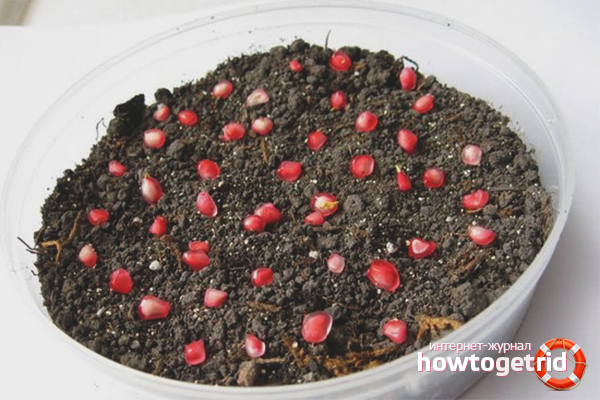
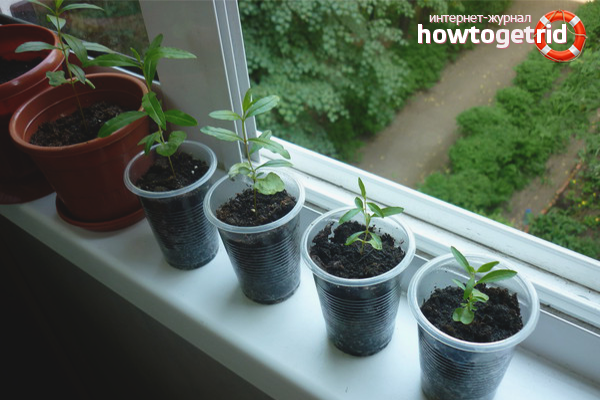
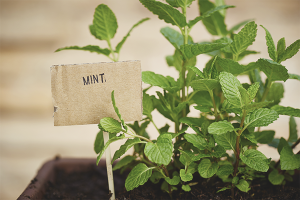
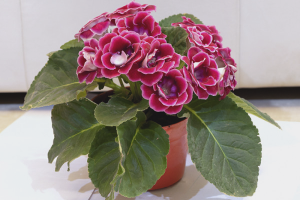
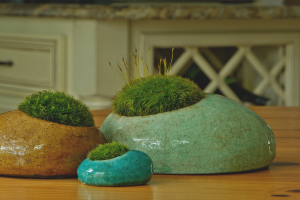
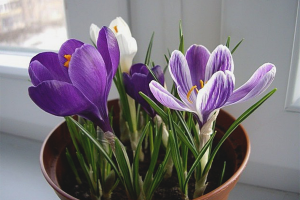

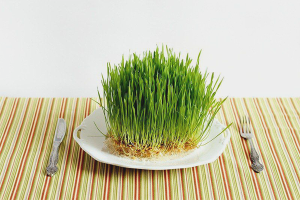
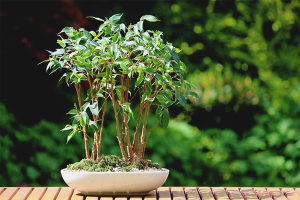
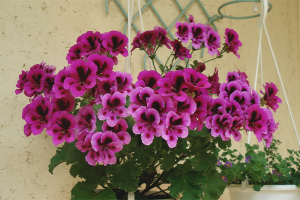
Submit